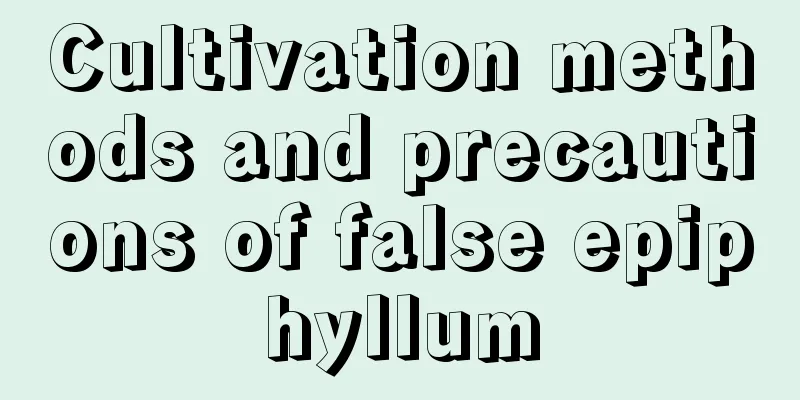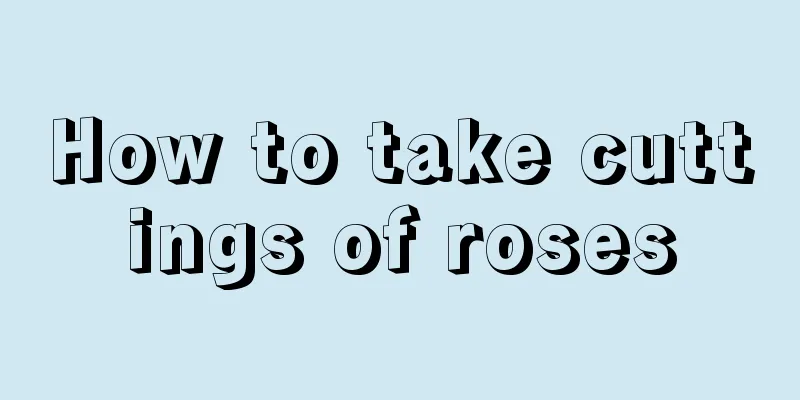Cultivation methods and precautions of false epiphyllum

How to grow false epiphyllumLight and temperatureWhen cultivating the false epiphyllum, you need to note that the false epiphyllum likes a semi-shaded growing environment, but the growth of the flower buds of the false epiphyllum requires 8 hours of light a day, so when cultivating, except in summer, you must ensure sufficient light. In winter, you can place it in a sunny place indoors for maintenance. In summer, you need to avoid sunlight exposure. It is best to place it in a ventilated and cool place indoors for maintenance. The maintenance temperature should be kept in a warmer range, about 15℃-25℃, and the temperature for wintering should not be lower than 10℃. Pot soilWhen planting and cultivating Epiphyllum, you can choose a flowerpot with a diameter of 10cm-15cm. When potting, you can use leaf mold, peat soil and river sand. Fill some broken tiles at the bottom of the pot to enhance air permeability and drainage. If you are growing the plant in a hanging pot, you can use moss as the substrate. Watering and fertilizingWater and fertilizer management is very important for the growth of Epiphyllum. The false epiphyllum needs sufficient water and fertilizer, and the soil in the pot needs to be kept moist, but not waterlogged. Note that after flowering and during dormancy, you should reduce watering and keep the soil moist. After the dormancy period, you can gradually increase watering. In addition, because the false epiphyllum prefers a humid environment, you should pay attention to spraying water around the plant frequently when cultivating it. As for fertilization, you can apply decomposed thin liquid fertilizer once a month. During the dormant period after flowering, reduce fertilization and prune the branches. Precautions for the cultivation of false epiphyllumRepottingRepotting is to make the false night-blooming cereus grow better. It is usually done in late spring or early summer, and once every two years. When repotting, you can remove the old soil and replace it with new soil, making sure the soil contains rich humus. Pests and diseasesThe main diseases of false epiphyllum are leaf spot and wilt, which can be treated by spraying 50% carbendazim. The insect pest of false epiphyllum is red spider mites, which can be sprayed with 40% malathion emulsifiable concentrate solution. |
<<: Cultivation methods and precautions of peacock grass
>>: When does the Fire Festival bloom?
Recommend
Why are the leaves of Phoenix Bamboo turning yellow and drying up?
Phoenix bamboo is popular for its elegant posture...
Cultivation methods and precautions of the lotus lantern
Temperature for growing lotus lanterns Because th...
What should I do if the tiger skin plant suddenly wilts?
1. Improper lighting Reason: Tiger Skin Orchid li...
These 5 kinds of flowers will become old trees if they are not watered for half a month, and their value will increase 10 times!
Aloe vera old pile Aloe vera has thick leaves and...
How to prune an orange tree
1. How to trim 1. Seedling pruning: After the see...
Spring Spinach Planting Time and Method
Spring Spinach Planting Time Spring spinach is ge...
What fertilizer should be used for fertilizing Epiphyllum? Can it be fertilized when the flower buds are growing?
1. What fertilizer to use for fertilization 1. Sp...
Causes and treatments for yellowing perilla leaves
1. Water shortage Reason: Perilla grows well in a...
How to breed flying dragons
1. Grafting If the operation is carried out durin...
What is Kapok? Kapok pictures
1. What is Kapok? Kapok, also known as red cotton...
How to grow thousand-leaf spider plant so that it can bloom out of the pot?
Chlorophytum comosum is an evergreen vine native ...
How can the gourd turn yellow? How can the gourd turn yellow quickly?
1. Conventional yellowing method 1. Sunlight: The...
Can green radish be watered with beer?
1. Can be poured You can water the green radish w...
What are the breeding methods and precautions of Brazilian dragon bones?
Brazilian dragon bone breeding method The Brazili...
How and when to plant cherry radish?
Cherry radish planting time Cherry radish can be ...









